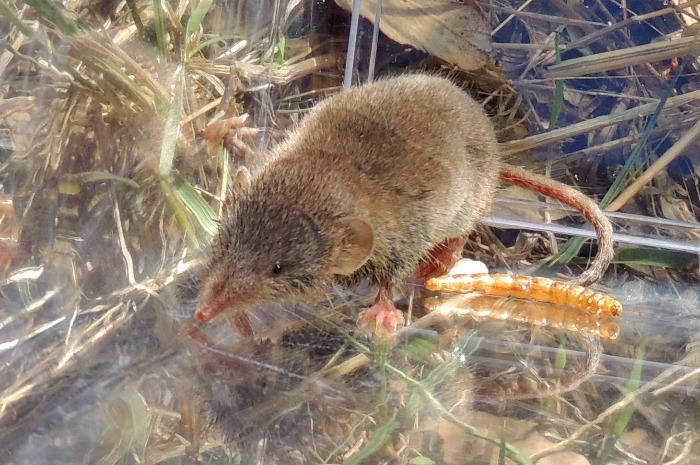Scientific name: Crocidura suaveolens
Family: Soricidae
Appearance: As its name suggests the Lesser White-toothed Shrew has white teeth rather than the reddish colour that is characteristic of other shrews. Its coat is a relatively pale reddish-brown, it has quite prominent ears and its tail is covered with long pale hairs that stick out at right angles.
Size: Head and body 5.0-7.5 cm; Tail 2.4-4.4 cm; Weight 3-7 g.
Natural history: The Lesser White-toothed Shrew is found only on the Isles of Scilly and on the Channel Islands of Jersey and Sark. It is mainly nocturnal but is sometimes active around dusk as well. It likes thick cover and lives in heathland and along the shoreline. Its diet consists of a wide range of invertebrates including beetles, centipedes and millipedes as well as worms and crustaceans when feeding on beaches. Breeding takes place from March through to September and a female can produce 2-4 litters of 1-5 young a season. The behaviour known as ‘caravanning’ when a mother will lead its young away from the nest in a line with each individual holding onto the tail of the one in front with its teeth is more common in this species than other British shrews.

(C) Wildlife Wanderer (shared under a CC BY-NC-ND 2.0 license)

 English (United Kingdom)
English (United Kingdom)  Czech (Čeština)
Czech (Čeština)  Nederlands (nl-NL)
Nederlands (nl-NL)  Magyar
Magyar  Deutsch (Deutschland)
Deutsch (Deutschland)  Croatian (Hrvatski)
Croatian (Hrvatski)  Polski (PL)
Polski (PL)  Español (España)
Español (España)